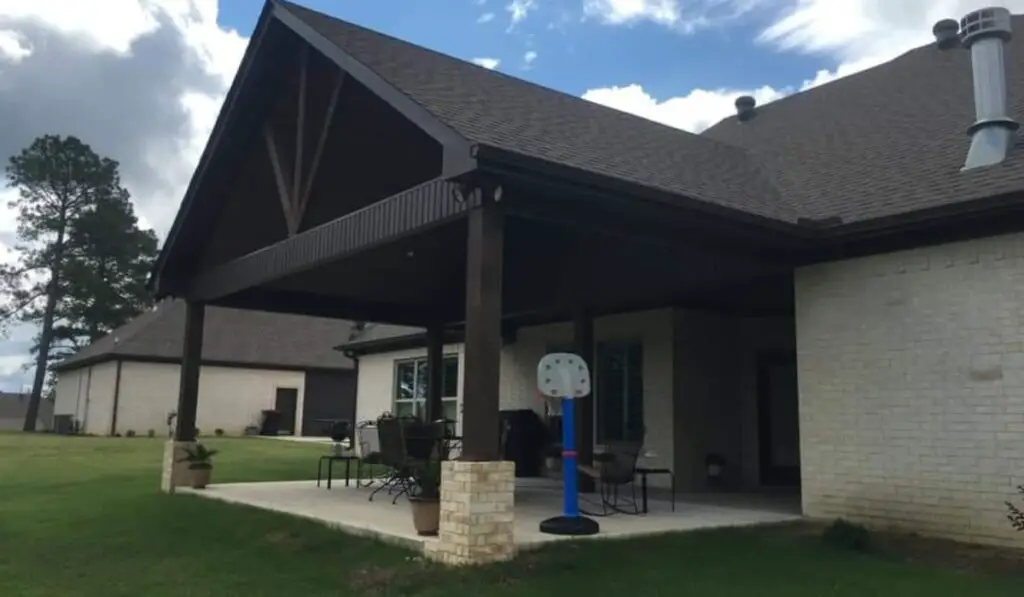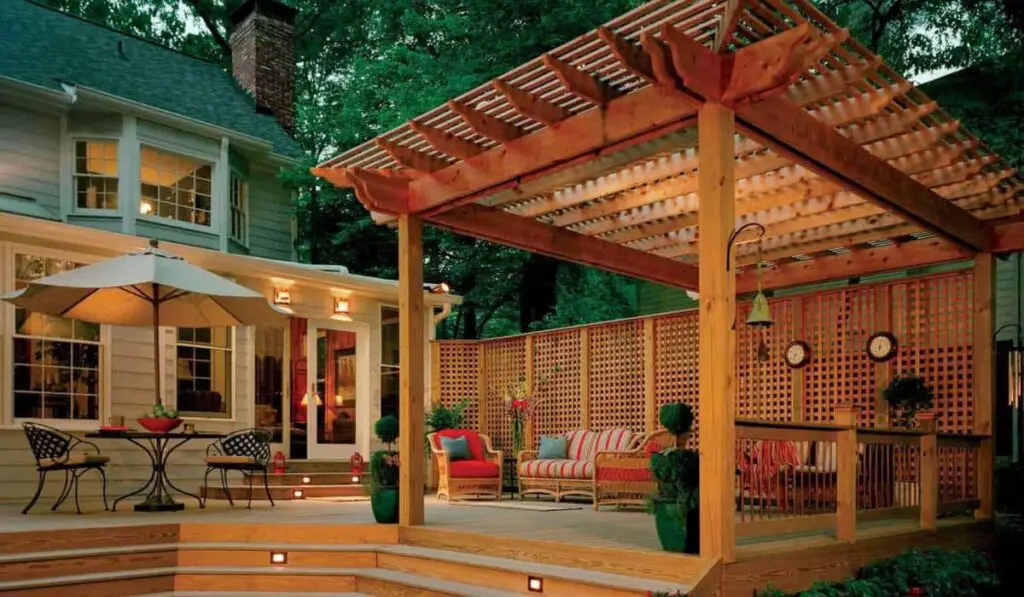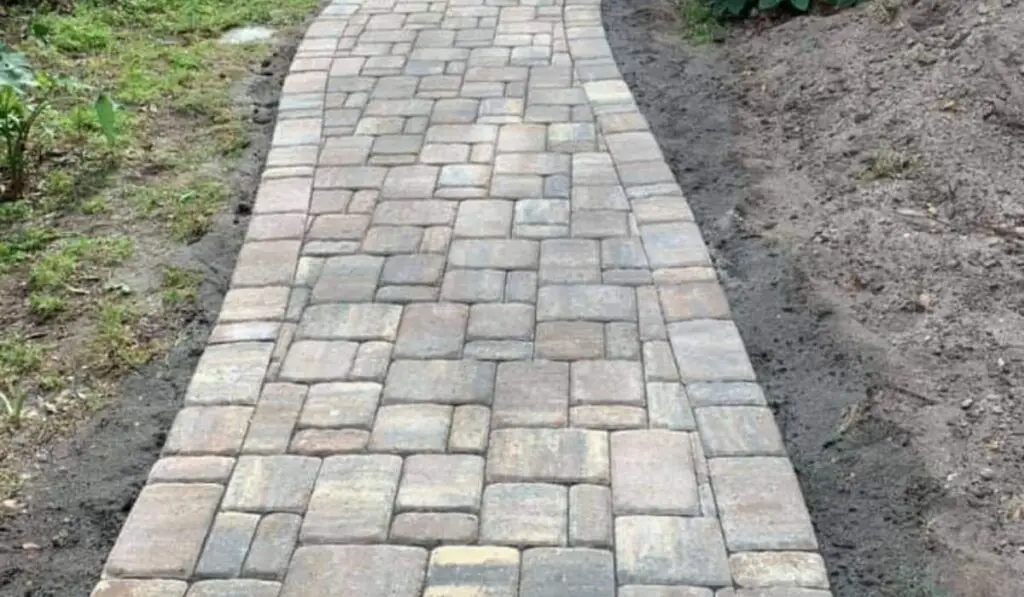Undoubtedly, we all want our homes to be aesthetically pleasing and welcoming. But how do you revamp your home’s exterior? Hardscaping has been touted as an ideal way of boosting the elegance of your outdoor space. What is hardscape construction, you ask? Well, let’s get right to it.
Contents
- 1 What’s Hardscape Landscape Construction?
- 2 Benefits of Hardscaping
- 2.1 Hardscaping Increases Your Property’s Value
- 2.2 Hardscape Projects Elevate the Aesthetic Appeal of Your Home
- 2.3 Maintenance is Easy
- 2.4 Homeowners Can Easily Incorporate Small Designs in Hardscaping
- 2.5 Hardscape Construction Might Help Homeowners Conserve Water
- 2.6 Hardscaping Helps Prevent Water Damage
- 2.7 Hardscapes Can Help Direct Traffic in Your Open Space
- 2.8 Hardscape Construction Allows You to Add Texture and Color to Your Landscape
- 3 Types of Hardscape Projects
- 4 What’s the Cost of Hardscaping?
- 5 Can Hardscaping Improve Your Home’s Value?
- 6 Hardscaping vs Softscaping vs Xeriscaping
- 7 Final Thoughts
What’s Hardscape Landscape Construction?
Hardscape construction involves using non-living objects in your landscape features. Hardscaping should include everything in your landscape that is not organic.
Good examples of hardscaping materials include natural stone and gravel. Hardscaping projects can consist of building pathways, patios, fences, decks, and retaining walls.
Benefits of Hardscaping
Are there reasons you should opt for hardscaping projects? Below are the benefits hardscaping brings to your home.
Hardscaping Increases Your Property’s Value
The National Association of Realtors indicates that properly installed landscape features make a house more appealing and thus increase the resale value.
The increase in resale value is dependent on the landscaping feature installed. For example, pathways will not increase the value as much as a gazebo or patio.
A rule of thumb when adding a hardscape feature to your home is to try and extend the functionality of your house while also making it look good. Doing this will greatly increase the resale of your property, especially when you decide to put it on the market.
Hardscape Projects Elevate the Aesthetic Appeal of Your Home
A straightforward reason for hardscaping is to improve your home’s appearance. As a homeowner, hardscaping gives you a wide range of options when creating a landscape that reflects your style and personality.
Hardscaping allows you to express creativity in your landscape. For example, you can create intricate designs using pavers with different patterns and shapes. Alternatively, include lighting in your hardscaping features to draw attention.
With plenty of customization options, hardscaping is an excellent way for owners to increase their properties’ aesthetics.
Maintenance is Easy
Almost all the hardscape construction guides include a section about how easily installed features are to maintain. This is unlike softscaping alternatives, which require routine care.
Take the example of a property with a grass yard. To ensure the yard looks good and healthy, the homeowner must mow and water it.
Hardscaping features are easy to maintain. In most cases, the homeowner will only have to sweep the feature occasionally to remove debris and leaves. After removing stains or mud, you can use water to clear up your hardscaping.
Homeowners Can Easily Incorporate Small Designs in Hardscaping
Hardscape landscaping construction allows you to incorporate small design elements across your property. Examples may include using pavers to spell “Welcome” or other patterns. Another is putting up a few benches in different areas around your property with a nice view.
Hardscape Construction Might Help Homeowners Conserve Water
Water conservation is crucial in promoting sustainability and lowering a property’s water bill. To this end, there are a variety of ways that hardscaping features come in handy.
A good example is creating hardscape features like rain barrels. Rain barrels are an excellent way for homeowners to collect and save water. These barrels are easy to build and allow the property owner to slowly use or recycle water in their garden.
Hardscaping Helps Prevent Water Damage
A common problem among property owners is water damage to homes. Fortunately, hardscaping around the house’s foundation is one of the best ways to solve water damage problems.
Hardscape features like stone pathways also come in handy for homeowners with properties in areas with muddy soil. With hardscape construction, homeowners can easily walk into and around their properties, especially during wet seasons.
Hardscapes Can Help Direct Traffic in Your Open Space
It can be frustrating when visitors don’t use designated paths to get around your property, especially if you have a manicured yard or garden around your home.
A great way to point out where people can walk on your property without saying a word is putting in hardscape features like paved/stone sidewalks and pathways.
Hardscape Construction Allows You to Add Texture and Color to Your Landscape
To most homeowners, adding texture and color to their landscape is pretty high up the list of reasons for landscaping their properties.
Hardscaping is one way to achieve this by using materials such as wood, flagstones, and bricks. Hardscape materials are usually available in different colors and textures, and the homeowner gets to install the exact features they want.
Types of Hardscape Projects
When answering what is hardscape construction, it’s prudent to touch on the types of hardscape projects you can undertake in your home. Below are common hardscape projects in most homes.
Patios

Patios are an ideal way to extend the living space of your home. Building a patio is a hardscape project that homeowners should undertake. The beauty is that you can use different materials to carry out the project. Some of these options include:
- Using bricks if you want a natural and upscale look
- Using concrete for those looking for a versatile choice with low maintenance
- Using tiles for dressing up concrete
- Going for flagstone for a low-cost natural stone floor
Decks
Another project you can take on if you want to increase the living space around your home is building decks. Decks allow for extra space to relax, hold events, and other outdoor functions.
Arbors, Pergolas and Gazebos

Apart from decks and patios, other hardscaping projects to increase space in your property include arbors, pergolas, and gazebos.
Even though most people think they are all the same, there are differences. Garden arbors are much smaller than the other two and can resemble curved arches.
Pergolas are much larger and can feature rafters and beams to support roofing. They can also be roofed or not, attached to the house, or freestanding.
Fences
Fences allow a homeowner to establish a boundary around their property, ensuring privacy. There are various fences one can put in depending on what fits with their requirements. Examples can include metal fencing using iron or coated steel and even fencing using wood.
Retaining Walls
Retaining walls are an excellent solution for people with gardens, backyards, and lawns in sloped areas. These walls provide a way to stop the soil and keep it in one place.
Walkways

Putting in hardscape walkways and pathways is an excellent way to direct traffic on your property.
A walkway ensures people only walk where they are supposed to. It can be beneficial, especially for homeowners with gardens or manicured yards.
What’s the Cost of Hardscaping?
The average cost of hardscaping can range between $20000 to $30000. This is the cost of a medium hardscape project done by a professional. You will spend much less on smaller projects, especially ones you do yourself. A larger project might end up costing more than this.
When discussing what is hardscape construction, the question of cost always comes up. While the initial cost is something to consider, it should not be the only one. You should factor in maintenance, repair, and customization costs.
Despite the initial investment, hardscaping, especially when done correctly, will last a long time with minimal maintenance.
Can Hardscaping Improve Your Home’s Value?
According to the National Association of Realtors, hardscaping is one way to improve the aesthetic value of your home and its resale value. The value increase depends on the type of hardscaping construction done.
According to realtors, adding a patio to a home can increase the home’s value by approximately 12.4%. On the other hand, fences aren’t significant drivers of a home’s value.
Hardscaping vs Softscaping vs Xeriscaping
Hardscaping involves using non-living materials when constructing landscape features. Hardscape materials can be natural stones, concrete, or tiles.
Softscaping is the opposite of hardscaping, where you only use natural and living materials for your landscape features. Examples of softscaping materials include plants and grass. In most cases, homeowners do not go one way but instead use a combination of the two on their properties.
Xeriscaping landscaping is an option for dry areas or where conserving water is the main priority of implementing landscape features.
Xeriscaping can sometimes incorporate softscape and hardscape features as long as they aid in preserving or retaining water. Examples of xeriscaping include planting cactus plants or putting up rain barrels.
Final Thoughts
If you are looking for an answer on what is hardscape construction, we hope we have at least answered it. There are different hardscaping projects you can implement around your home or property. These projects make your property look good and increase its value on top of other benefits.
Hello! My name is Chris, and I am the founder of Yard Floor. When I was a toddler, my family had a lush green lawn. I was at the center of caring for and maintaining this lawn and even proceeded to take an associate’s Degree in landscaping. I am here to share my years of experience with you – be it repairing your mower/tractor or caring for your lawn.